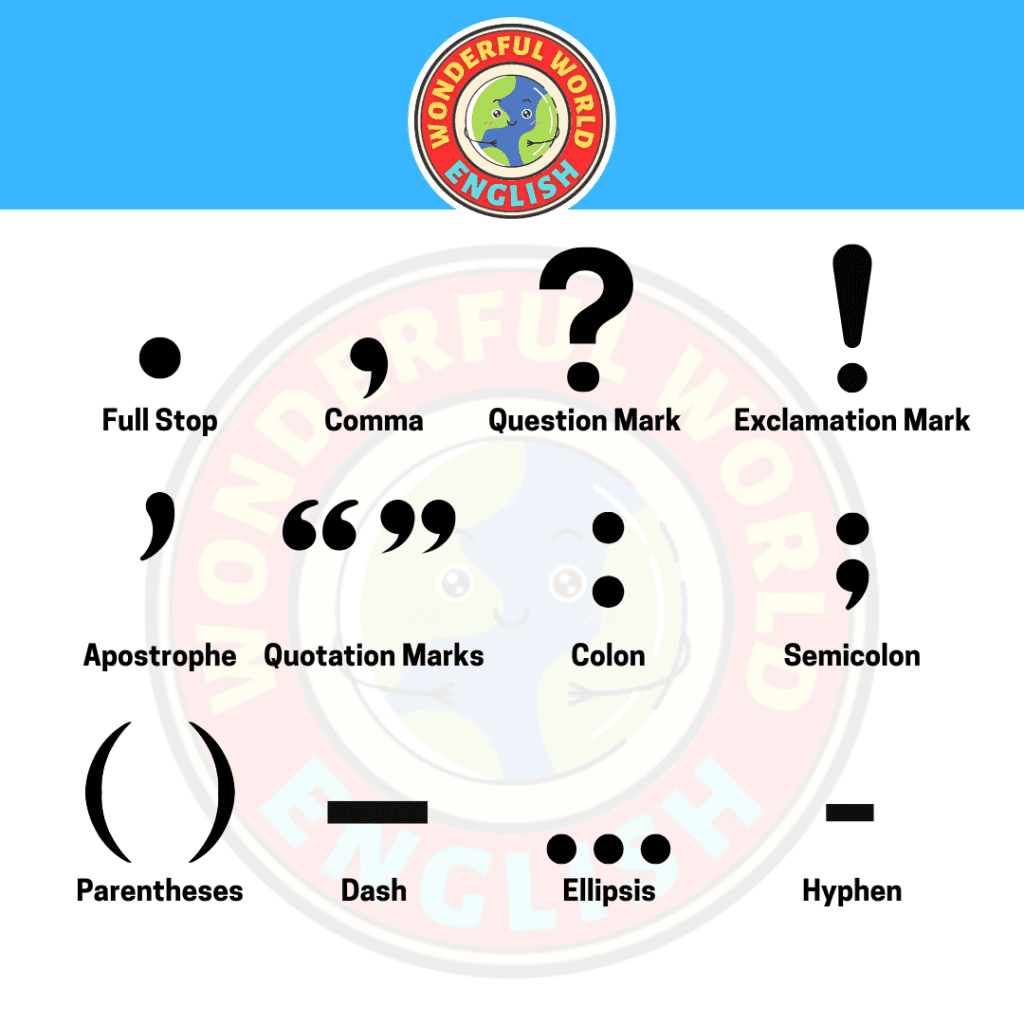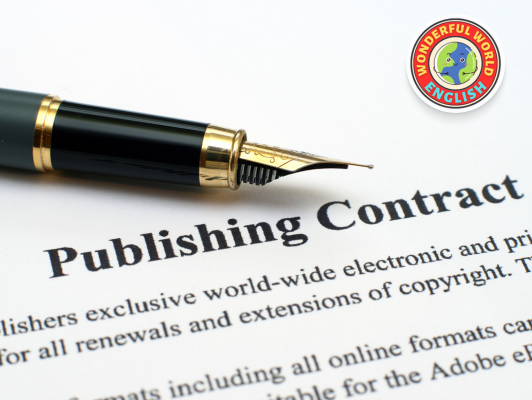Contents
Toggle
Meet David De’ Ath, founder, editor, and writer at Wonderful World English. With his extensive background as an English teacher, David provides valuable insights and practical tips on ESL for students and teachers alike.
Whether you’re crafting stories, essays, or reports, becoming a better writer is a journey.
Start by building a strong foundation in grammar and vocabulary.
This sets the stage for clear and effective communication.
Personal voice is key. Experiment with different styles until you find one that feels right.
As you write more, you’ll discover what makes your writing unique and engaging.
Never overlook the importance of editing.
Revising your work helps you catch mistakes and refine your ideas.
The best writers are relentless revisers, always looking to improve their work.
Key Takeaways
- Build a strong foundation in grammar and vocabulary.
- Find and develop your personal writing style.
- Prioritize editing and revising your work.
Understanding the Foundations of Writing
To be a better writer, it’s important to grasp grammar basics, build a rich vocabulary, and master punctuation.
Grasping Grammar Essentials
Proper grammar ensures clarity and professionalism.
Subject-verb agreement means the subject and verb must match in number (singular/plural).
For example, “She runs” and “They run.”
Tense consistency is crucial. Inconsistent tenses can confuse readers. Stick to past, present, or future tense as needed.
Pronoun usage helps in making sentences clear. Use pronouns like he, she, it, they correctly to avoid confusion.
Sentence structure includes simple, compound, and complex sentences. Varying sentence types makes writing more engaging. For instance:
- Simple: “The dog barked.”
- Compound: “The dog barked, and the cat ran away.”
- Complex: “When the dog barked, the cat ran away.”
Building a Rich Vocabulary
A strong vocabulary makes writing vivid and precise.
Word choice is key. Pick words that convey the right tone and meaning.
Synonyms and antonyms add variety. Instead of repeating the same word, use synonyms. For example, use “happy” or “joyful” instead of always saying “glad.”
Context clues help readers understand new words. Providing context makes it easier to understand unfamiliar terms.
Consistent practice expands vocabulary. Reading books, articles, and engaging with new words regularly can help. Keeping a list of new words and their meanings can also be beneficial.
Mastering Punctuation Rules
Proper punctuation makes writing clear and readable.
Periods (or full stops) end statements.
Commas separate items in a list or ideas in a sentence. For example, “I bought apples, oranges, and bananas.”
Semicolons link closely related ideas. An example is, “She loves pizza; it’s her favorite food.”
Colons introduce lists or explanations. An example is, “She needs three things: food, water, and shelter.”
Apostrophes show possession or form contractions. For example, “Amy’s book” or “it’s” for “it is.”
Quotation marks enclose direct speech or quotes. For example, He said, “Let’s go.”

Developing Your Writing Style
A strong writing style is clear, simple, and unique to each writer. Another key aspect is mastering persuasive techniques.
Embracing Clarity and Simplicity
Clarity and simplicity are essential in good writing. Writers should use short sentences and common words.
This helps readers understand the message easily. Avoid using jargon or complicated language that might confuse the audience.
Use active voice rather than passive voice. For example:
- Active: The cat chased the mouse.
- Passive: The mouse was chased by the cat.
Be concise. Remove unnecessary words. For example, instead of saying “at this point in time,” just say “now.”
Finding Your Unique Voice
Every writer has a unique voice that reflects their personality and perspective. To discover this, writers should read a lot and write regularly.
Pay attention to what feels natural and enjoyable to write.
Experiment with different styles and tones. Try writing in different genres or about various topics. Over time, a distinctive style will emerge.
Reflect on feedback from others. Constructive criticism can help refine and polish that unique voice.
The Art of Persuasive Writing
Persuasive writing is about convincing the reader to agree with a point of view or take action.
Start with a clear stance or argument.
Use facts, examples, and logical reasons to support the argument.
Address counterarguments respectfully. Acknowledging other viewpoints can strengthen the original argument.
Use emotive language cautiously to appeal to the reader’s emotions without being manipulative.
An effective conclusion summarizes the main points and reinforces the argument.

Crafting Compelling Characters
Creating characters that feel real and engaging is crucial for any story.
Focus on their backgrounds, how they speak, and what drives them to make your characters stand out.
Developing Character Backgrounds
A character’s background gives depth to their actions and choices.
Think about where they grew up, their family, friends, and significant life events.
This history shapes their personality and how they view the world.
Use a character sheet to jot down details:
| Character Info | Details |
|---|---|
| Name | |
| Age | |
| Hometown | |
| Education | |
| Family |
It helps to write a short biography to capture their essence. Even if not all details make it to the story, knowing them helps in writing believable characters.
Creating Realistic Dialogue
Dialogue shows a lot about a character. Pay attention to how different people speak based on their backgrounds and personalities. A teenager won’t sound like a retiree.
Use these tips:
- Keep it natural: Write as if the character is talking, not the writer.
- Avoid info-dumping: Characters should speak to each other, not the audience.
- Use contractions: People usually say “isn’t” instead of “is not.”
Also, read dialogue out loud. If it sounds stiff or unnatural, revise it.
Understanding Motivations and Arcs
Every character needs a reason behind their actions, known as motivation.
This drives the plot and makes their decisions believable.
A character arc is the transformation they undergo, which can be growth, change, or regression.
Consider these questions:
- What does the character want?
- What stands in their way?
- How do they change by the end?
Mapping out motivations and arcs:
| Character | Motivation | Obstacle | End State |
|---|---|---|---|
| Protagonist | To find truth | Lies from others | Gains understanding |
| Antagonist | To keep power | Protagonist’s quest | Faces downfall |
By clearly defining motivations and arcs, characters will feel more authentic and their journeys more engaging.

Plotting and Structuring Your Work
Creating a strong plot and structure is key to keeping readers engaged. Organizing ideas, setting up a compelling narrative, and maintaining tension are crucial parts.
Outlining Your Narrative
An outline serves as a roadmap. It helps keep track of key events and character developments.
Start by jotting down major plot points and then arrange them in a logical sequence.
Think of these points as anchor events that support the story.
Bullet points work well for this:
- Introduction: Introduce main characters and setting
- Rising Action: Develop conflicts and challenges
- Climax: The turning point of the story
- Falling Action: Resolve subplots and conflicts
- Conclusion: Provide a satisfying ending
Using an outline helps to visualize the entire story and ensure nothing important gets left out.
Exploring Different Narrative Structures
Different narrative structures can change how a story feels. Examples include linear, non-linear, and circular structures.
A linear structure tells events in chronological order. It’s straightforward and easy to follow.
A non-linear structure jumps around in time. This can add mystery and complexity.
A circular structure brings the story back to its starting point. This can create a sense of completeness.
Choose the structure that best suits the story you want to tell. Explore genres and see how different structures are used to affect pacing, tension, and reader engagement.
Maintaining Pace and Tension
The pace of a story can make or break the reader’s experience.
Short sentences and paragraphs can speed up the pace and build tension.
Longer, detailed descriptions slow it down, giving readers a break and adding depth.
To keep tension high, end chapters with cliffhangers or unresolved questions. Introduce conflicts and problems that require resolution.
Balance action scenes with quieter moments to give readers time to breathe.
This ebb and flow keeps the story engaging from beginning to end. Monitoring the pacing helps maintain reader interest all the way through.

Editing and Revising Processes
Effective editing and revising can drastically improve writing quality. Key aspects include self-editing techniques, constructive feedback, and using editing tools.
Conducting Effective Self-Edits
Self-editing starts with taking a break after writing to gain a fresh perspective.
It’s important to read the text aloud to catch awkward phrasing or errors. Checking for spelling, grammar, and punctuation mistakes is crucial.
Writers should also look for clarity and coherence. Ensuring each paragraph has a clear main idea helps the text flow smoothly.
Removing redundancies and unnecessary words makes the writing more concise.
Seeking Constructive Feedback
Input from others can identify issues the writer may have missed.
It’s best to choose readers who are familiar with the topic. Asking specific questions can guide their feedback.
Feedback should be detailed and focus on both strengths and weaknesses.
Consider breaking down feedback into sections on content, structure, and language. Writers should be open to criticism and see it as a way to grow.
Utilizing Editing Tools and Services
Many tools can aid the editing process. Grammar checkers like Grammarly or Hemingway catch common errors and suggest improvements.
These tools also highlight passive voice, overly complex sentences, and other stylistic issues.
Some writers may also benefit from professional editing services. These services offer expert insight and thorough revisions. It’s important to choose reputable services with positive reviews.
Tables, lists, bold, and italic formatting can help organize and emphasize key points.
A combination of self-editing, feedback, and tools ensures thorough and efficient revision, resulting in polished, high-quality writing.
Related: Best Apps to Improve English Writing Skills

Achieving Consistency in Writing
Being a consistent writer means maintaining a steady tone, sticking to set routines, and setting attainable goals.
Maintaining Consistent Tones
A consistent tone helps the reader feel connected. Whether the tone is formal, casual, or humorous, it should match the content and audience.
To maintain consistency, writers should plan their tone before starting. If writing multiple pieces, refer back to previous works to ensure the tone aligns.
Checking for tone differences during the editing process can help catch inconsistencies.
Reading the text aloud can also be helpful. This simple activity can highlight shifts in tone, making them easier to fix. By keeping a consistent tone, the writer builds a recognizable style.
Establishing a Routine and Discipline
Writing regularly improves skill and makes the process easier.
Establishing a dedicated writing time each day helps create a habit. Some writers find early mornings best, while others prefer evenings.
Finding a quiet space with minimal distractions can be crucial for staying focused.
Consistency in writing time also means being disciplined. Even on days when ideas don’t flow easily, sitting down to write keeps the habit strong.
This routine keeps the mind trained on writing, making it easier to return to the work even after breaks.
Setting Realistic Writing Goals
Setting goals helps measure progress and keeps motivation high.
It’s important to set goals that are manageable. For example, writing 500 words a day or finishing one article a week can be more effective than aiming for something overwhelming.
Breaking larger projects into smaller tasks can make them more approachable.
Using tools like calendars or writing apps to track progress can be helpful. Goals should be flexible to accommodate unexpected events.
By setting realistic goals, writers can steadily improve without feeling overwhelmed.

Publishing and Sharing Your Work
After writing, the next steps involve submitting your work, promoting it, and leveraging digital platforms. Each step plays a crucial role in reaching a wider audience and achieving success.
Navigating the Publishing World
Getting published involves knowing where to submit your work.
Research various publishers and literary agents. Literary magazines, online publications, and book publishers are good places to start.
Read submission guidelines carefully. Follow them to increase your chances.
Consider self-publishing for more control. Each option has its pros and cons. Remember to keep track of all your submissions.
Marketing Your Writing
Once published, marketing is essential. Start by building an author platform.
Social media and personal websites are key. Connect with readers by engaging regularly.
Consider doing book tours and readings, both in-person and online.
Create posters or social media posts.
Collaborate with other authors. Reviews on Amazon and Goodreads can boost visibility.
Using Digital Platforms Effectively
Digital platforms offer many tools to share your work.
Blogging can showcase your writing style. E-books and audiobooks provide different formats to reach various readers.
Use email newsletters to keep fans updated. Platforms like Wattpad help in sharing early drafts and getting feedback. Analyze what works best for you and continue experimenting.

Continuing Education and Improvement
Writers can always find ways to improve. They should attend workshops, read a lot, and be open to feedback.
Attending Workshops and Courses
Workshops and courses help writers learn new skills. They get to meet other writers and learn from experts.
Different classes focus on different things, like character building or dialogue.
Online courses offer flexibility to fit busy schedules. Attending these sessions can boost a writer’s confidence and keep them updated on new trends.
Reading Widely and Analytically
Reading a variety of genres expands a writer’s knowledge. It helps them understand different styles and techniques.
Analytical reading is key. This means looking at how and why the author made certain choices.
Take notes on structure, vocabulary, and pacing. Learning from other writers can sharpen one’s own writing skills.
Incorporating Feedback and Learning from Critique
Feedback is essential for growth. Writers should seek out honest critiques.
This helps them see their work from a different perspective.
Joining writing groups or finding a mentor can provide regular feedback. It’s important to not take critiques personally.
Instead, use them to improve. Make revisions based on the feedback received.

Frequently Asked Questions
This section addresses foundational steps for beginners, strategies for essay writing, improving professional skills, techniques for English proficiency, enhancing creative writing, and daily practices for elite writers.
What are the foundational steps for beginning writers to improve their skills?
Start with reading books regularly. Practice writing every day. Learn basic grammar and vocabulary.
What strategies can essay writers apply to enhance their writing?
Outline your essay before writing. Use clear topic sentences. Support your points with evidence. Edit and revise your work.
In what ways can I improve my writing skills for professional purposes?
Focus on clear and concise communication. Know your audience well. Proofread to avoid errors. Use tools like Grammarly for assistance.
What techniques can help in becoming a more proficient writer in English?
Read and analyze good writing. Write regularly to improve fluency. Use a thesaurus to expand vocabulary. Practice writing in different styles.
How can creative writing be improved for more impact and engagement?
Create strong characters and settings. Use vivid descriptions. Write from different perspectives. Edit multiple times for clarity and impact.
What daily practices can contribute to developing oneself as an elite writer?
Set a daily writing goal. Keep a journal. Read a wide variety of genres. Take time to learn new words each day.
We hope you have found value in this guide; feel free to reach out if you are in need of any assistance.
Have a wonderful day!
Image Attribution: All images licensed via canva.com





